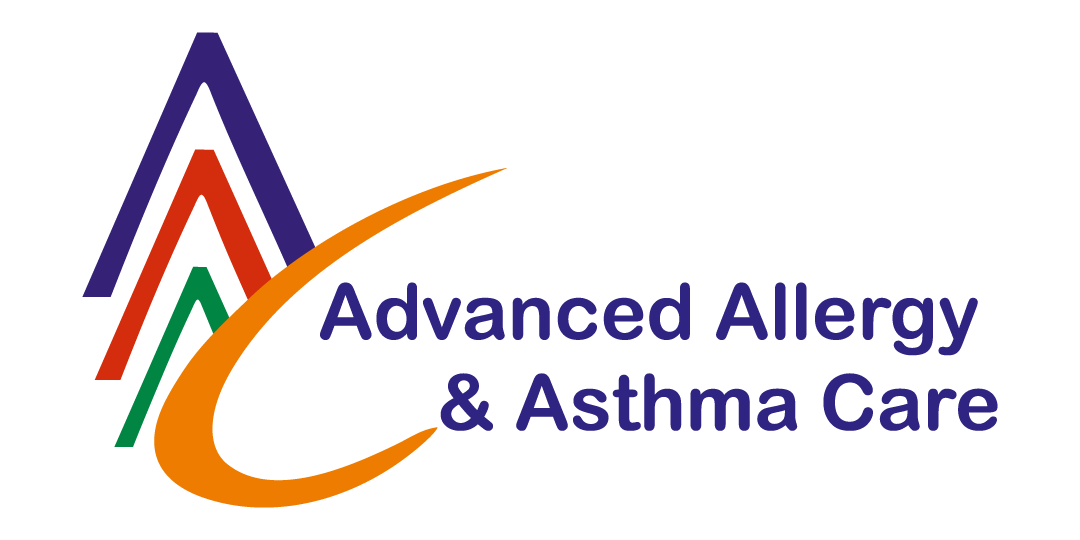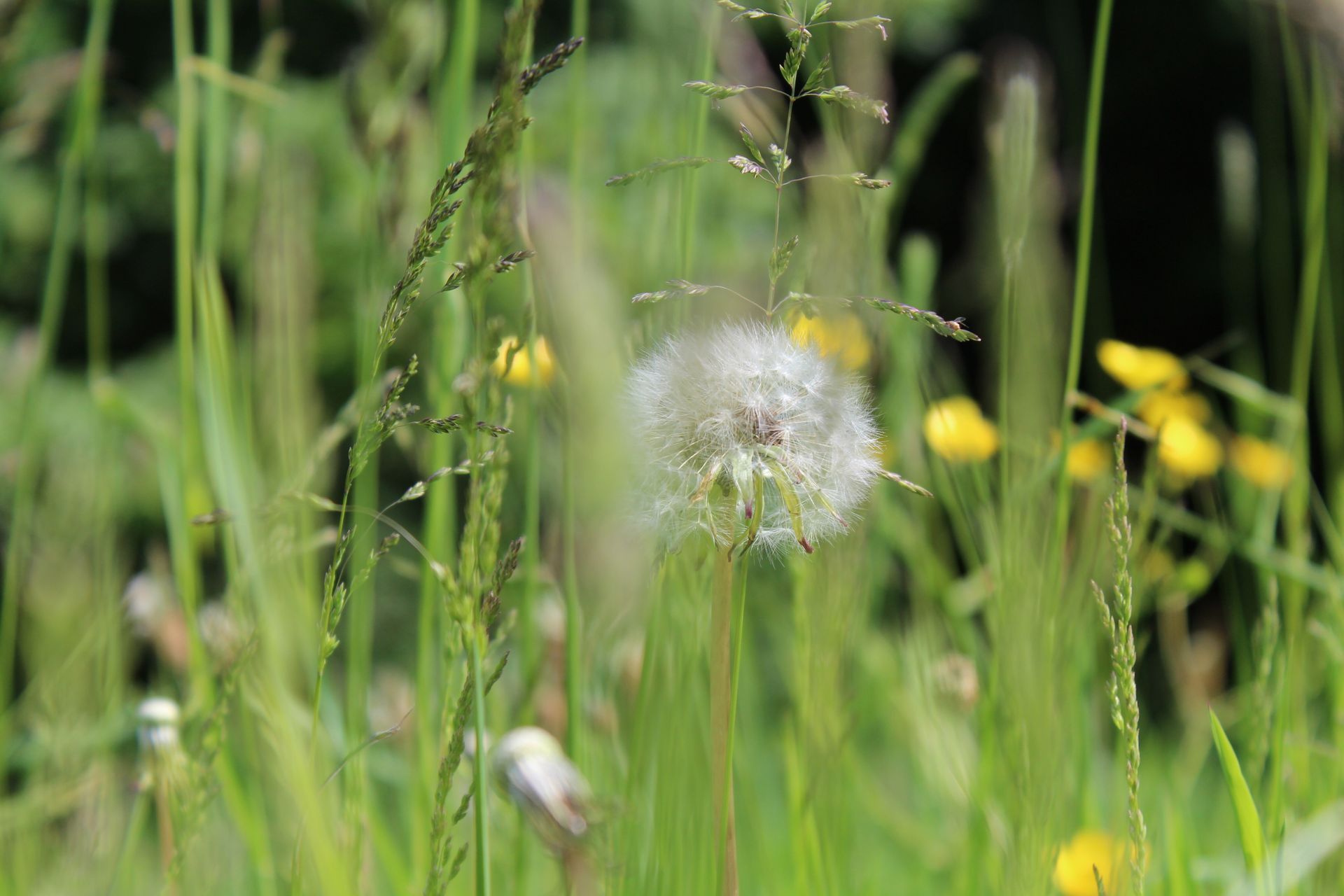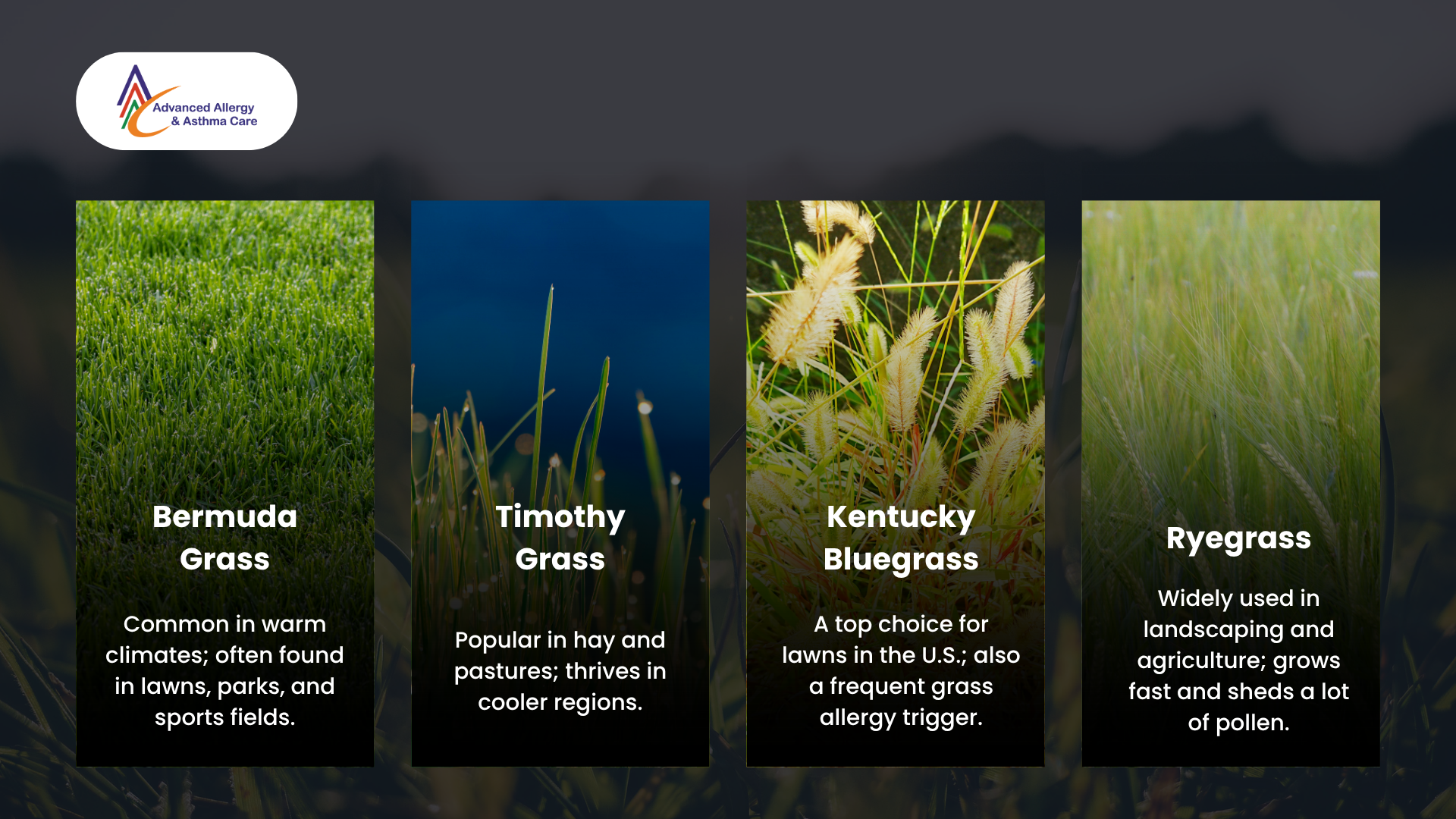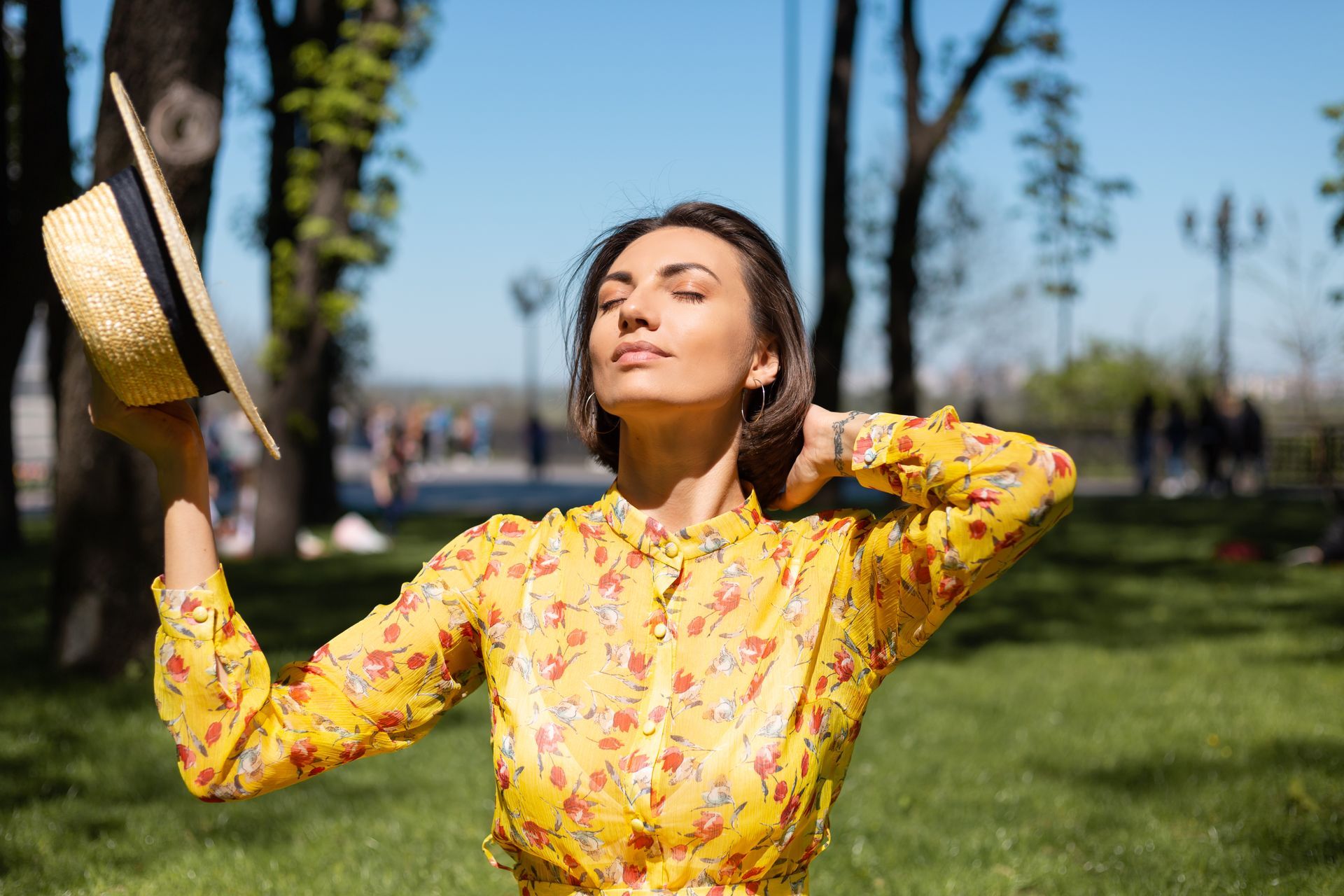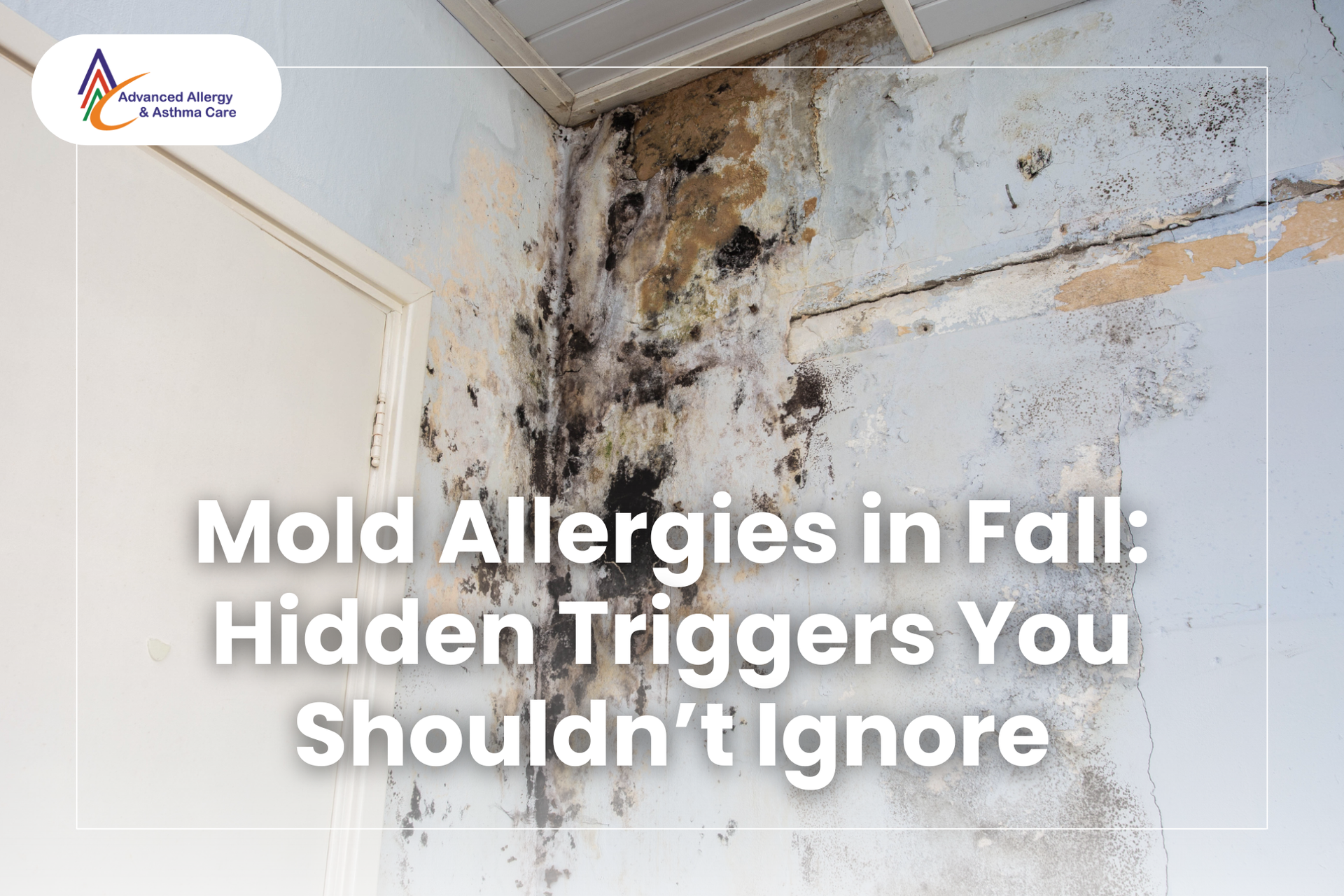There’s nothing like a sunny summer afternoon—windows down, grass freshly mowed, and the scent of the season in the air. However, for many, this picture-perfect moment quickly turns sour as allergy symptoms intensify. If stepping outside leaves you feeling worse instead of refreshed, you’re likely dealing with pollen energy.
Grass pollen is one of the most common triggers of seasonal allergies, especially in late spring and summer. As grasses release pollen into the air, your immune system can mistake it for a threat, causing uncomfortable symptoms that range from mild irritation to full-blown allergic reactions.
At
Advanced Allergy and Asthma Care, we know how frustrating this can be. That’s why we’re here to help you take back control of your summer. In this blog, we’ll break down what grass pollen allergy looks like, when pollen levels tend to spike, and most importantly, how you can protect yourself and find lasting relief.
Don’t Let Pollen Win This Summer
What Is a Grass Pollen Allergy?
If you find yourself sneezing nonstop, struggling with itchy eyes, or constantly battling a runny nose every summer, grass pollen might be the sneaky culprit. It’s one of the most common causes of seasonal
allergic rhinitis— better known as hay fever.
Grass pollen allergy typically flares up during late spring and summer, when grasses release their pollen. This is different from year-round allergies, which are triggered by allergens like dust mites or pet dander and persist throughout the year.
Common
grasses that trigger allergies include:
When grass pollen season peaks depends on where you live, but it generally hits the hardest in the warmer months. Knowing when
pollen counts rise can help you prepare and protect yourself.
Common Symptoms to Watch Out For
Grass pollen allergy can show up in several ways, and knowing what to look for helps you take action sooner. Watch for these common signs:
- Sneezing
- Runny or stuffy nose
- Itchy eyes, nose, or throat
- Watery, red eyes
- Cough or wheezing
- Fatigue
When Is Grass Pollen Worst? (Timing Matters)
Some days just feel worse than others when you have grass pollen allergies, and that’s no coincidence. Pollen levels change throughout the day and across the seasons. Knowing when grass pollen peaks can help you plan your time outdoors and avoid the worst of your symptoms.
Here’s what to keep in mind:
- Pollen counts are usually highest in the early morning through midday, especially on warm, dry, and windy days.
- Rainy days or cooler weather often bring some relief, as moisture helps keep pollen on the ground.
- Pollen levels tend to rise again after a period of dry weather, so allergy symptoms may flare up after several hot, dry days.
Pollen counts measure the amount of pollen in the air, which is typically rated from low to high.
Checking daily pollen forecasts can help you stay ahead.
Try these sources to check pollen levels in Florida:
The grass pollen season in Florida typically runs from March through October, depending on the specific area and local weather conditions.
How to Prevent and Manage Grass Pollen Allergy Symptoms
Knowing when pollen peaks is a great first step. But real relief comes from being proactive. If you’ve ever wondered how to prevent allergic reactions to grass pollen, it starts with simple habits that limit your exposure and help reduce symptom flare-ups.
Here are practical ways to reduce exposure and feel better:
Limit Outdoor Exposure
- Stay indoors during peak pollen times, usually early morning to midday.
- Wear sunglasses and a hat when outside to keep pollen away from your eyes and hair.
- After being outdoors, shower and change clothes to remove pollen.
Create an Allergy-Safe Home
- Use HEPA filters in your AC and vacuum to trap pollen.
- Keep windows closed on high pollen days.
- Clean floors often, especially carpets, to remove settled pollen.
Maintain Your Lawn and Yard Smartly
- Avoid mowing the lawn if possible; wear a mask if you must.
- Water your lawn in the evening to reduce pollen spread.
- Skip gardening on days with high pollen counts.
Control Allergy Symptoms with Medication
- Over-the-counter antihistamines, nasal sprays, and decongestants can ease symptoms.
- Allergy care works best when personalized.
Advanced Allergy and Asthma Care provides expert treatment tailored to your specific needs.
These simple steps can help you enjoy summer with fewer allergy problems. And remember, support is just a call away!
When to See an Allergist
If your grass pollen symptoms don’t improve with over-the-counter medication or disrupt your daily life, it’s time to see an allergist. They can diagnose your allergies and create a personalized treatment plan.
Here are some signs to watch for that suggest it’s time to see a specialist:
At
Advanced Allergy and Asthma Care, we offer comprehensive allergy testing to pinpoint your triggers. This usually involves:
- Skin tests – involve placing small amounts of common allergens on or just under the skin to observe if a reaction occurs
- Blood tests – measure how your immune system responds to specific allergens through a sample sent to a lab
Once we identify your specific grass allergies, we can recommend the most effective pollen allergy treatment for long-term relief. That might include lifestyle changes, medications, or
immunotherapy (allergy shots), which is a powerful way to build tolerance over time and reduce your symptoms naturally.
Breathe Easy, Summer's Still Yours
Grass pollen doesn’t have to suck the joy out of your summer. With a few smart precautions, like avoiding peak pollen times, maintaining an allergy-safe home, and managing your symptoms, you can stay comfortable and enjoy the season. Recognizing the signs early and knowing when to seek help can make a significant difference.
If your symptoms persist or worsen, it’s time to take the next step. At
Advanced Allergy and Asthma Care, we’re here to help you find lasting pollen allergy relief through personalized treatment, testing, and immunotherapy. You don’t have to suffer through summer. Let’s create your allergy relief plan together.
Say Goodbye to Summer Sniffles
Frequently Asked Questions
Can grass pollen stick to my pet’s fur and trigger my allergies indoors?
Yes. Dogs and cats that spend time outside can bring pollen inside on their fur. Wipe them down with a damp cloth or grooming wipe before they come in, and try to keep them off furniture and bedding on high-pollen days.
Does wearing a face mask actually help with grass pollen exposure?
It can. A well-fitted mask, especially one with a filter, like N95 or KN95, can help block airborne pollen while you're outdoors, mowing, or gardening. Many allergy sufferers find that wearing masks noticeably reduces symptoms during peak season.
Can grass pollen trigger skin allergies or rashes?
In some cases, yes. Direct contact with freshly cut grass can cause itchy, red rashes in individuals with grass sensitivities. Wearing long sleeves and pants while working outside can help prevent this.
Can I develop grass pollen allergy as an adult, even if I never had it before?
Yes. Allergies can develop at any age. Changes in the environment, stress, or immune system sensitivity can cause someone to develop allergies later in life, even if they’ve never had issues before.



